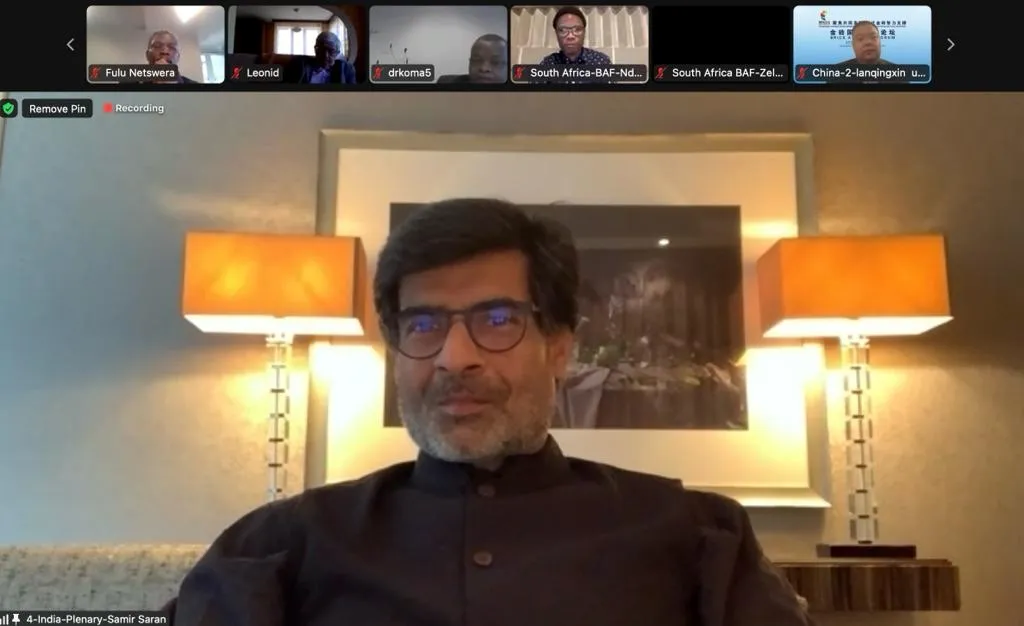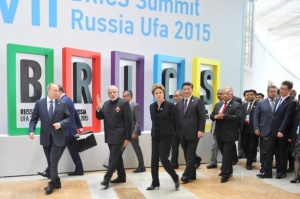
Remarks by Dr Samir Saran at the Opening Plenary session of the BRICS Academic Forum 2022
It is a pleasure to be back again and be a part of the academic forum that has continued to raise important issues for intra BRICS cooperation and indeed, for the challenges that confront our world.
We are meeting today at an important moment—a moment that will be recorded and studied by future generations. It is important that all of us rise to the challenges that confront us and be creative in discovering solutions. Three major trends are seeking our attention and indeed, resolution.
First, global politics has been upended by the political actions in Asia and Europe. Conflicts, contests, and careless power projection have jeopardised stability, peace, and prosperity for all. Can we discover a new geostrategic balance and what role can BRICS play?
As we emerge from the pandemic—or at least begin to learn to live with it—what are the lessons that we have learnt? Will new development and growth models emerge, and will BRICS and other actors invest in what is most important for humankind?
And finally, we are experiencing the digitalisation of everything. Technology is having an impact on our economy, our politics, our societies, and indeed our individual behaviours, choices, and assessments of the world we live in.
New Politics, Green and Inclusive Growth, and our Common Digital Future beckons us. At the Indian presidency of the BRICS last year, we coined three words—Continuity, Consolidation, and Consensus. These remain relevant even as China steers the group and must continue to define the BRICS agenda.
We have to work together to overcome the contested politics of today. We must be contributors to stability in world affairs. We should reject actions as a group and as individual nations that can create further instability or exacerbate current tensions.
BRICS was always meant to be a grouping that would offer an alternative path to one prescribed by the Atlantic Order. We must continue to strive to do this. Unipolarity must give way to multipolarity. Bipolarity is not an option.
Three key elements will shape the path that BRICS and others must pave.
First, as the political assumptions of the 20th century may no longer be sufficient or valid for a more complex world, we must work together to script a multilateralism that is fit for purpose. It must reflect current realities, the aspirations of different geographies, and a governance structure that is plural, transparent, and accessible. The old hegemony of the Atlantic Order must not be replaced by a new hegemony from another region.
BRICS must continue—individually and collectively—to remain inclusive in shaping the multilateral system. This system must deliver on economic and trade growth. It must find new ways of catalysing financial flows for infrastructure and aspirational needs of multiple geographies. Multilateralism for this century will require new anchors and champions. BRICS can play that role, provided all members are committed to it.
Second, future growth and our economic needs will have to cater to our planetary responsibility. Green transitions must not simply be a buzzword, but the policy design for all. BRICS must work—both within and with others—to put together a template to invest toward a green planet. We have to rethink mobility, urban spaces, consumption, and our lifestyles. We must also work to protect those who are already being burdened by the deleterious consequences of global warming, rising sea levels, and harsh weather conditions.
Thirdly, we have to embrace technology and not allow it to become the new arena for zero-sum politics. The world must see technology as a digital public good and it must serve all of humanity equitably. The rules for this digital future are yet to be written. These rules must not be written only by the western hemisphere. In the absence of such agreed rules, sovereign arrangements must prevail over those written by the boardrooms. BRICS can share experiences and learnings from our individual journeys and offer to the world examples and methods of managing our common digital future. We must ensure that countries, within and outside, do not weaponise technology or game the digital public square.
It is impossible for BRICS to attain its full potential and contribute to global affairs unless each member is committed to the BRICS project and the thinking that led to its creation—peaceful co-existence, within the group and with others, being the primary ethos.


